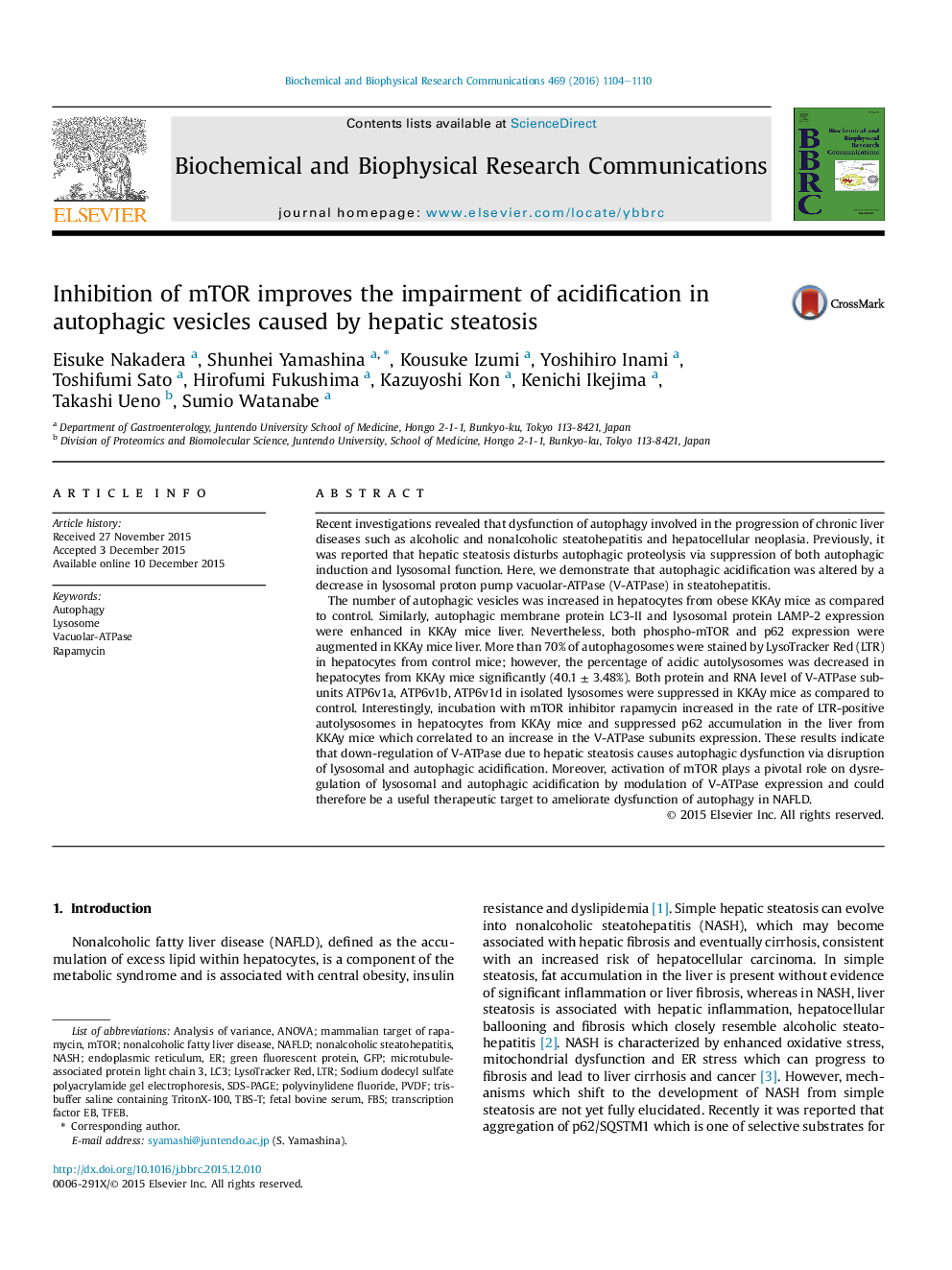| Article ID | Journal | Published Year | Pages | File Type |
|---|---|---|---|---|
| 10749592 | Biochemical and Biophysical Research Communications | 2016 | 7 Pages |
Abstract
The number of autophagic vesicles was increased in hepatocytes from obese KKAy mice as compared to control. Similarly, autophagic membrane protein LC3-II and lysosomal protein LAMP-2 expression were enhanced in KKAy mice liver. Nevertheless, both phospho-mTOR and p62 expression were augmented in KKAy mice liver. More than 70% of autophagosomes were stained by LysoTracker Red (LTR) in hepatocytes from control mice; however, the percentage of acidic autolysosomes was decreased in hepatocytes from KKAy mice significantly (40.1 ± 3.48%). Both protein and RNA level of V-ATPase subunits ATP6v1a, ATP6v1b, ATP6v1d in isolated lysosomes were suppressed in KKAy mice as compared to control. Interestingly, incubation with mTOR inhibitor rapamycin increased in the rate of LTR-positive autolysosomes in hepatocytes from KKAy mice and suppressed p62 accumulation in the liver from KKAy mice which correlated to an increase in the V-ATPase subunits expression. These results indicate that down-regulation of V-ATPase due to hepatic steatosis causes autophagic dysfunction via disruption of lysosomal and autophagic acidification. Moreover, activation of mTOR plays a pivotal role on dysregulation of lysosomal and autophagic acidification by modulation of V-ATPase expression and could therefore be a useful therapeutic target to ameliorate dysfunction of autophagy in NAFLD.
Keywords
GFPLC3TBS-TmTORLTRTFEBPVDFLysoTracker Redvacuolar-ATPaseFBSNAFLDAutophagynonalcoholic steatohepatitisSDS-PAGESodium dodecyl sulfate polyacrylamide gel electrophoresisNonalcoholic fatty liver diseaseanalysis of varianceANOVARapamycinmicrotubule-associated protein light chain 3fetal bovine serumendoplasmic reticulumTranscription factor EBLysosomeNash mammalian target of rapamycingreen fluorescent proteinPolyvinylidene fluoride
Related Topics
Life Sciences
Biochemistry, Genetics and Molecular Biology
Biochemistry
Authors
Eisuke Nakadera, Shunhei Yamashina, Kousuke Izumi, Yoshihiro Inami, Toshifumi Sato, Hirofumi Fukushima, Kazuyoshi Kon, Kenichi Ikejima, Takashi Ueno, Sumio Watanabe,
